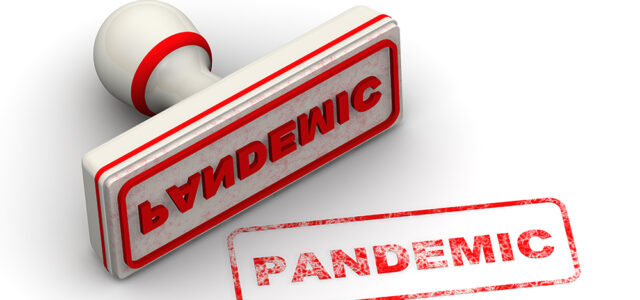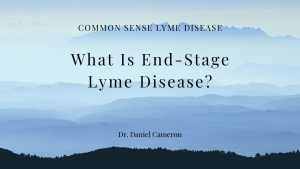Call for your appointment today 914-666-4665 | Mt. Kisco, New York

by Daniel J. Cameron, MD, MPH
The survey’s data should not come as a surprise. Twelve years ago, in 2004, while testifying before the Connecticut Public Health Department, the state’s chief epidemiologist Dr. James Hadler warned officials that “… roughly 1% of the entire population, or probably 34,000 people, are getting a diagnosis of Lyme disease in Connecticut each year … 20% to 25% of all families [in Connecticut] have had at least 1 person diagnosed with Lyme disease and … 3% to 5% of all families have had someone diagnosed with Lyme disease in the past year.” [2]
In the years since Dr. Hadler’s testimony, Lyme disease has escalated far beyond being a mere blip on our radar. The complexity of the Lyme spirochete, the difficulty in diagnosing and treating the infection, the growing number of cases and the spread of the disease into new geographic regions, both within our country and worldwide, has elevated Lyme disease to a whole new level.
Lyme disease is typically referred to as an endemic problem. Endemic is defined as an “organism that is restricted or peculiar to a locality or region,” according to Merriam-Webster. But today, Lyme disease hardly fits this definition.
Other medical conditions designated as pandemic include acute hemorrhagic conjunctivitis (AHC), AIDS, cholera, dengue, influenza, plague, severe acute respiratory syndrome (SARS), scabies, West Nile disease, and obesity.
So, is it time to designate Lyme disease as a pandemic? The disease clearly meets the criteria. Pandemic is defined as an outbreak of a disease that occurs over a wide geographic area and affects an exceptionally high proportion of the population. [3] Recently published reviews have described the worldwide distribution of Lyme disease and other tick-borne illnesses. [4] And, as the Connecticut survey data demonstrates, Lyme disease can affect an exceptionally high proportion of the population. [1]
What is a Pandemic? by Morens and colleagues describes eight basic characteristics that apply to all or almost all pandemics. [5] Those include:
- Wide geographic extension. Diseases that extend over large geographic areas, i.e. the 14th-century plague (the Black Death), cholera, influenza, and HIV.
- Disease movement. Such as the spread of dengue, associated with the extension of the geographic range of vectors, such as Aedes albopictus mosquitoes.
- High attack rates and explosiveness. Multiple cases appearing within a short time.
- Minimal population immunity. New subtypes or drifted strains.
- Novelty. Repeatedly reemerging diseases.
- Infectiousness. Typically refers to transmissibility rather than non-infectious conditions such obesity or smoking.
- Contagiousness. This can include different mechanisms such as transmitting through fleas (plague) or by water (cholera).
- Severity. This has included diseases of low or moderate severity, such as AHC in 1981 and cyclic global recurrences of scabies when they exhibit explosive (AHC) or widespread and recurrent (scabies) geographic spread.
Lyme disease meets these eight characteristics that have been applied to pandemics by Morens. [5] The disease has a worldwide distribution; is moved long distances by birds; has a high attack rate and explosive spread; offers minimal immunity; can lead to a wide range of chronic manifestations not previously described; is transmitted by a vector, and can lead to severe illness. [6,7]
It’s time for Lyme disease to be designated as a pandemic. This reclassification might then empower physicians, scientists and public health officials with a stronger argument in justifying increased funding and commitment of resources to more aggressively study the disease.
Sources:
- Butler AD, Sedghi T, Petrini JR, Ahmadi R. Tick-borne disease preventive practices and perceptions in an endemic area. Ticks Tick Borne Dis, (2015).
- Public Hearing of the State of Connecticut, Department of Public Health, In Re: Lyme Disease, held January 29, 2004 Hartford, Connecticut. at https://www.ct.gov/ag/lib/ag/health/0129lyme.pdf. (Last accessed 12/31/15).
- Harvey WT, Salvato P. ‘Lyme disease’: ancient engine of an unrecognized borreliosis pandemic? Med Hypotheses, 60(5), 742-759 (2003).
- Diuk-Wasser MA, Vannier E, Krause PJ. Coinfection by Ixodes Tick-Borne Pathogens: Ecological, Epidemiological, and Clinical Consequences. Trends Parasitol, (2015).
- Morens DM, Folkers GK, Fauci AS. What is a pandemic? J Infect Dis, 200(7), 1018-1021 (2009).
- Klempner MS, Hu LT, Evans J et al. Two controlled trials of antibiotic treatment in patients with persistent symptoms and a history of Lyme disease. N Engl J Med, 345(2), 85-92 (2001).
- Fallon BA, Keilp JG, Corbera KM et al. A randomized, placebo-controlled trial of repeated IV antibiotic therapy for Lyme encephalopathy. Neurology, 70(13), 992-1003 (2008).



